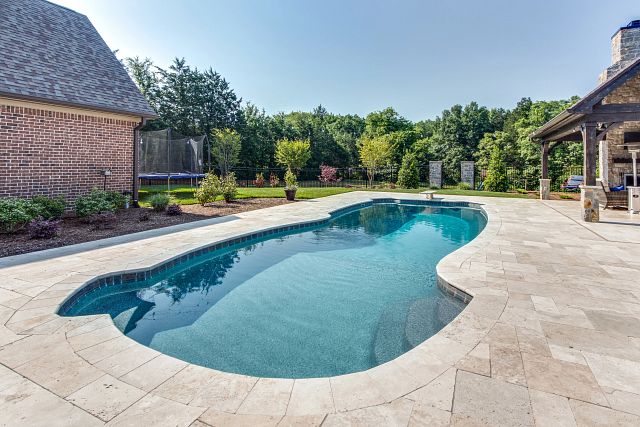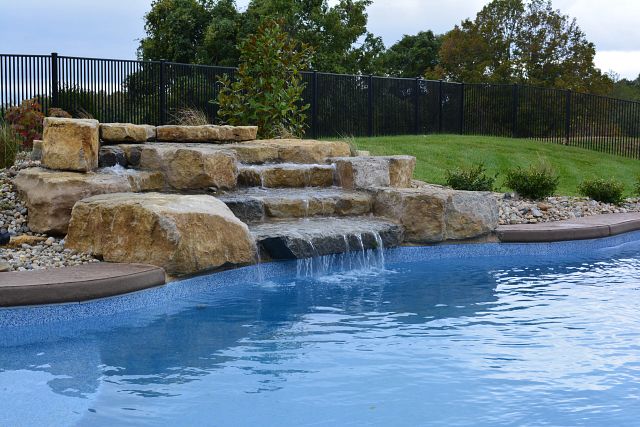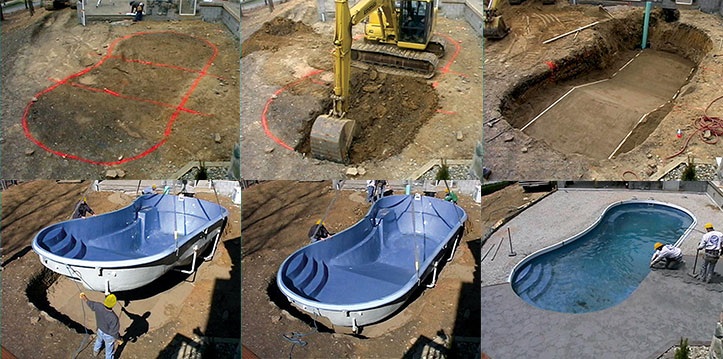Home swimming pools can be an oasis from the sizzling summer heat, a place where family and friends go to spend time together and cool off. But unsightly stains and blemishes in your inground pool can ruin the fun. If you’ve got swimming pool problems, here’s how to diagnose the cause and fix them.
What’s Causing Your Problems
The good news is that depending on what type of stain you’re seeing, there’s typically one major root cause that needs to be addressed. Pool staining and blemish problems usually come down to one of four causes.
- No available free chlorine
- Poor water circulation
- Not testing your water, or reading tests incorrectly
- Lack of proper routine pool maintenance
Once you’ve diagnosed what kind of stains you’re looking at, there’s usually a remedy.
Hard Water Issues
Some of the more common stains people see in their pools result from scaling, the buildup of calcium. The line of scale that forms around your pool can be difficult to remove. Scaling can also be observed as calcium comes out of suspension in your water and floats on the surface.
Where does the calcium come from? It’s either calcium carbonate or calcium silicate that’s found in especially hard water. You don’t see it normally, as the substances are dissolved in your water, but as it accumulates it begins to build up, not only on your pool surface, but on your heater coils as well.
Problems with calcium carbonate can be addressed by adjusting the pH of your pool to between 7.2 to 7.8, or by adjusting the total alkalinity. If the problem is left to fester unchecked, however, you may need to implement elbow grease and scrub.
Calcium silicate presents a bigger problem. It shows up as a greyish-white scale, and is much harder to remove. You’ll need a pumice stone and a lot of elbow grease, or the assistance of a professional.
How do you know the difference? Apply muriatic acid to the scale. If it foams, you’re in luck–it’s calcium carbonate. If there’s no reaction, it’s calcium silicate.
Even More Slippery When Wet
If you’ve got brown, dark green or even black stains on your pool walls, the culprit may be algae. Not only is it unsightly, but it can be incredibly dangerous if it spreads to areas where people may be stepping, such as pool ladders, steps and edges. Algae is very slippery and can increase the risk of slips and falls. It can also damage pumps and filters if it breaks loose and infiltrates them.
Algae is the direct result of insufficient free chlorine levels. The quick fix is to super-chlorinate your pool, check you pH levels to make sure they’re between 7.2 to 7.8, and brush surfaces with a pool brush to remove them. Follow that up with a better adherence to regular pool maintenance, and the problem should be addressed.
The type of pool you install in your backyard can also be a contributing factor. When you choose liner products from Latham Pool, you get a quality product that’s less susceptible to chemical staining, requires less effort to maintain, and just looks beautiful. Contact a local independent dealer in your area to learn more about Latham’s full range of pool products.






Join the discussion